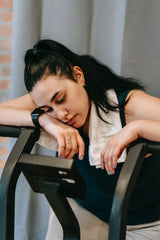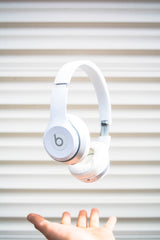Short and Sweet: Can Shorter Workouts Get You Fit?

We’d probably all like an extra hour in the day.
There just never seems enough time to get everything done and going to the gym is often the soft target on our to-do lists; it’s the easiest thing to sack off. Some of us LOVE spending hours on the treadmill. Some of us just WISH we could get in and get out of a workout as quickly as possible. Steady-state cardio is often sold as the key to getting fit: keep going for as long as you can to burn calories and increase endurance. And it’s not wrong, but as Wiktoria Banda explains it’s often seen as the go-to workout.
Wouldn’t it be great if we could train hard but in less time. Wouldn’t it be great if we could work out for 30 minutes instead of 90 — think of what we could do with the extra time.
HIIT Training
High-Intensity Interval Training or HIIT has been around for a few years. In 2017, it was ranked as one of the top fitness trends of the year by the American College of Sports Medicine, and back in 2013, it had topped their list.
Nick Holt for Built Lean describes HIIT as training where ‘you alternate between a high-intensity exercise for a given time and a lower intensity exercise (or rest) for a given time. A great example of a HIIT workout is sprinting at near-maximum speed for 30 seconds, followed by walking for 30 seconds.’
HIIT means pushing yourself hard — very hard.
The idea is to get within 85-100% of your maximum heart rate. You’re working out for less time so you have to exercise with intensity. If you’re doing it properly, then you should feel like you’re ready to drop at the end of each interval.
Very Well Fit gives this example of what a 10-minute HIIT workout looks like. RPE refers to Rated Perceived Exertion. It’s how hard that you feel you’re working on a 10-point scale with 5 being mid-level effort and 10 an all-out OMG I’m going to die effort.
1 minute: Warm up with a brisk walk - RPE - up to 5
1 minute: Speedwalk - speed up until your RPE is at 6-7
1 minute: Run - RPE 8
1 minute: Jumping Jacks - RPE 8
1 minute: Speedwalk - RPE 8
1 minute: Run - RPE 9
1 minute: Jumping Jacks - RPE 9
1 minute: Run - RPE 9
1 minute: Jumping Jacks - RPE 9
1 minute: Sprint - RPE 9
1 minute: Walk at an easy pace to cool down - RPE back down to 3-5

HIIT probably looks tempting, doesn’t it?
But it takes trust on your part. You can’t give 50% and expect results (although, many people would argue that any exercise is better than no exercise — which is true). HIIT requires an all-out or as near-to-all-out effort as you can give. Psychologically speaking, that can be tough. Our brains usually give up way before our bodies do. It’s far easier to plod along on a treadmill or do a few planks or push-ups than it is to commit to a real uncomfortable effort. If you’re struggling with the intensity, then it could be worth investing in classes or in a personal trainer. It’ll be far harder to phone it in if you’ve got someone holding you accountable for your effort.
HIIT training might not be suitable for you if you’re unfit. ALWAYS check with your doctor before starting any new exercise routine.
Will Shorter Workouts Get You Fitter?
HIIT is Quicker
HIIT takes up less of your time. It’s shorter.
It won’t dominate your day-to-day schedule. We can all sack off a 90-minute gym session because ‘we’re too busy’, but can you honestly say that you don’t have fifteen, twenty or thirty minutes spare? It could mean getting up a little bit earlier or getting a workout in on your lunch break; it could mean getting off the sofa in the evening and exercising between your favourite programmes. Either way, HIIT means fewer excuses. You don’t even need to go to the gym. Most HIIT workouts don’t require any specialist equipment. You can use your own bodyweight or buy affordable equipment like kettlebells and dumbbells. There are plenty of free HIIT workouts on YouTube to try, too.
It Helps with Weight Loss
A longer workout must automatically mean a bigger calorie burn, right? It turns out that it’s not quite that simple. One study published in the Scandinavian Journal of Public Health showed that those who worked out for 30 minutes a day lost a third more weight than those exercising for 60 minutes. Those participants who worked out for 30 minutes said that post-exercise they felt as if they still had plenty of energy. This gave them the motivation to lead healthier lives. Dr Astid Jesperson told the Telegraph that:
HIIT isn’t automatically always better than steady-state cardio for calorie burning however, it’s just that it cuts the time you spend exercising. A post on the Food for Fitness website points to a recent study which found that HIIT wasn’t as effective at calorie burning if the participant was able to fulfil their cardio routine effectively and regularly. For example, the fat-burning potential of HIIT for a person might be 300 calories per workout. That same potential for steady-state cardio could be 500 calories. So, if fat-busting is someone’s goal, then opting for steady cardio makes more sense.
HIIT does have the advantage of appetite suppression. Long cardio sessions can increase our appetite because we expend a lot of energy during our workouts — understandable. BUT there’s a psychological downside; it’s easy to think that if we’ve worked hard that we can we reward ourselves with food. We deserve it. If HIIT can suppress appetite after exercise — with one study suggesting it can happen within two minutes — then this could help keep calorie intake down.

You Keep Burning Calories After HIIT
There’s some debate as to whether ‘afterburn’ is a factor in a HIIT workout. Afterburn is known as excess post-exercise oxygen consumption (EPOC). The American Council on Exercise explains EPOC rather well — ultimately it’s an oxygen debt. This means you could still be burning calories hours after you’ve left the gym. Isn’t that a lovely thought? Practitioners swear that HIIT provides maximum afterburn.
As the New York Times explains, however, it’s hard to find a definitive answer as to whether or not the afterburn effect is worthy of its hype. Results vary massively. Some studies found no additional post-exercise calories burned whilst other studies have pitched the number at a few dozen calories and some as many as 700. The New York Times wrote about one study that described itself by saying that it ‘trumps studies that preceded it because of its careful design.’ Amy A. Knab of Appalachian State University was the lead author of the study that put a group of men into a metabolic chamber (to measure calorie consumption) for 2 24-hour periods. For the first 24-hour period, the men did nothing more than sit and eat two meals. This sedentary calorie burn was recorded. The second time the men went into the chamber, they did exactly the same as before except this time for 45-minutes they rode stationary bikes vigorously. The NY Times reported the findings:
“The exercise itself burned about 420 calories...But what was most interesting was the calories burned afterward. Over the next 14 hours, the men burned an extra 190 calories, increasing the total calories burned by 37 percent.”
“We were surprised,” Dr. Knab said.
She thought there might be extra calories burned, but she did not expect so many, nor did she expect the effect to last so long.
HIIT Could Help Those At Risk of Diabetes
Surprisingly, HIIT could have benefits to those with a high risk of developing Type-2 diabetes. Researchers tested 40 sedentary adult women at risk of type-2 diabetes mellitus and put them on 10 weeks of HIIT. The women’s cardiometabolic health was monitored throughout. When the study was over, those women in the higher-risk group benefited most of all ‘particularly when it came to their blood pressure and the levels of glucose and insulin found in their blood.’
HIIT is a valuable tool, but it probably shouldn’t be the be-all and end-all of your workouts. It’s effective. It’s calorie burning. But it’s big draw is that allows us to work out harder and smarter: ideal in the modern world when we could all do with a little more time. HIIT training isn’t goal specific. It can’t take the place of steady-state cardio if you’re training for a marathon or if you’re a footballer or an athlete BUT it will help. Rather than seeing it as the answer or the replacement to cardio, we should use it as an important component to our workouts.
Whether you’re into HIIT or cardio, you’re going to sweat and moisture will ruin your headphones. It doesn’t matter what brand you’re wearing — excessive sweating when you exercise kills headphones. Fortunately, there’s EarHugz: sweat-resistant, machine washable and anti-bacterial covers to protect your sound during your workout.




